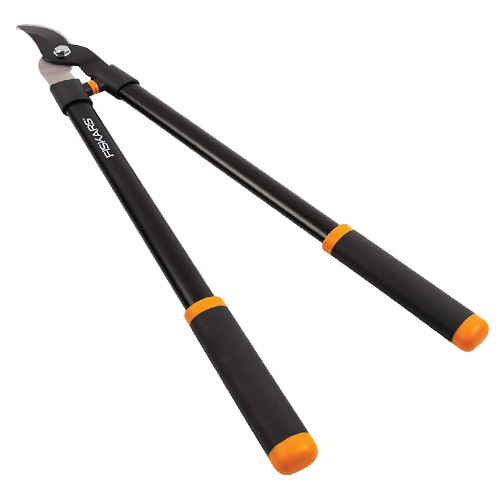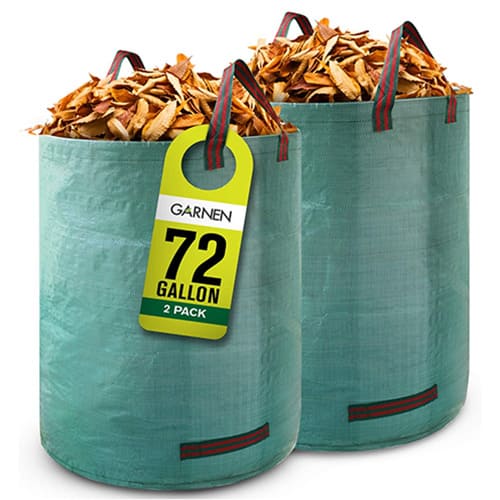All along the west coast and beyond, wildfires run rampant every year, popping up in forests when the brush is dry, usually in late summer and early fall. But don’t be fooled, a fire can happen in any season. A small campfire on a windy night or a littered cigarette butt can also be the cause of a huge fire.
Wildfires and forest fires are on the rise in North America, especially in the West. Because of droughts over the past few years, wildfire season has become long, starting earlier, and burning more rampantly every year.
Because of this, we are now becoming more aware of the dangers that communities, homes, and farms are all facing with these fires. But the good news is that we’re also becoming more aware of how to protect ourselves, one of the methods being to make a firebreak.
Keep reading to learn what a firebreak is and how you can make one to protect your home from a wildfire or to protect the rest of your property from a building fire.

What is A Firebreak?
Firebreaks are clearings where forest fires “break” instead of moving forward. They’re also called fuel breaks since they deprive a potential fire of any fuel to spread. These clearings are bare, usually with no vegetation at all.
If your property is bordered by forest, your property is at risk of being damaged by a nearby forest fire. To protect your home and family from a forest fire, you should be making a firebreak somewhere on your property.
Even if you don’t live in an area that is known for fires, it’s always better to be prepared for an emergency. Even housefires can cause forest fires if you live close enough to a forest, especially if you’re downwind.
How To Use An Axe To Make A Firebreak With An Axe
To make a firebreak, you need to create an area surrounding your home or property that is clear of any plant life or things that would accelerate or attract the fire. That means cutting trees, removing any brush, and keeping the grass very low, so that you don’t feed the fire.
You need to protect your home, your family, and any animals you have, and a firebreak that can stop a fire in its tracks (at least until it can be extinguished) is one of the best ways you can do that.
Preparing Your Firebreak
The first step to making a firebreak is to find an optimal place for it. To find the best place, ask yourself these questions:
The main areas that you should be focusing on are around buildings like your home, shed. And if you live in a rural area, definitely make one to protect your barn or stable.
GEDORE OX 620 H-1257 H-1257-Multipurpose Forestry Axe

Features:
- For woodworks, splitting firewood, cutting branches or limbing felled trees
- ROTBAND-PLUS bonds the handle and hammerhead into one unit to ensure max safety
- Steel handle sleeve protects the handle from damage when you miss your target
Nupla APC6E-32 Fire Pick Head Axe

Features:
- Non slip grip assures usein slippery conditions
- Handle has a molded slug of tough engineering material allowing quick assembly
- Used in a number of fighting applications
Finding The Right Tools To Make A Firebreak
Depending on the terrain, you’ll need a few different tools to be able to make a decent firebreak. If your designated spot is full of small, young trees and brush, you will do fine with just a hatchet.
But, if the trees are bigger or there are a lot of limbs, you may also need a forestry axe or a fireman’s axe. Some other tools you may need include:
Bypass Lopper

Features:
- Ideal for cutting green, living growth like tree branches
- Fully hardened, precision-ground blade stays sharp through heavy use
- Rust-resistant, low-friction coating helps the blade glide through wood
Garnen 72 Gallon Garden Waste Bags

Features:
- Garnen’s yard waste bags are one of the best gardening tools for anyone with a green thumb
- The outdoor collapsible bags keep ergonomics and convenience in mind
- The polypropylene woven trash bags are lightweight, durable, water-repellent, tear-resistant, and eco-friendly

Clearing Trees In Your Firebreak
Firebreaks should be 30-50 feet, so mark the area and start by getting rid of all dry brush like bushes, dead leaves, and pine needles, and any other flammable material. If you have a garden, you should take out any dry or dead plants and opt for ones that won’t burn easily like hostas and other moisture collecting shrubs.
If your designated firebreak has trees you can cut, then fell them using your axe. If there are bigger trees, you may have to leave them, but you’ll want to space them out. Remember that you will have to take all of the wood with you because if you leave it, it will actually make things worse.
Trimming Trees And Overgrown Limbs
Sometimes, it’s not always possible to completely clear an area, especially if there are a lot of trees. But pruning these trees, so that they don’t extend over 10 ft and are spaced out contains the fire to one tree at a time.
Burning branches can also drop and start a new fire on the ground. With your loppers, snip any branches that are hanging over your house firebreak. Then, using your axe or a hatchet, cut any overhanging limbs or branches that span too far outward.
Cleaning Up
After taking all of those limbs, trees, and other vegetation down, you have to clean it up. In addition, you’ll need to get rid of piling leaves and pine needles on the ground. This removes any fuel that the fire would otherwise use to spread across the ground.
A true firebreak has no vegetation at all. No trees, leaves, or even grass. This can mean raking or tilling the soil, making it harder to burn and halting any grass growth. Without these things, a fire will either go around, in other directions where there is fuel or will continue to burn in one spot until it’s extinguished.
Conclusion
Note that if a fire’s too big, it may not be stopped by a firebreak. Nothing is ever guaranteed, especially with wildfires. Wind also may affect how fast and far a fire can spread. In the wind, embers are blown and will catch on dry tinder and plants.
Along with a firebreak, you should also be making an evacuation plan for yourself and your family. Having an axe in your emergency kit is also helpful to have. Finally, if you see smoke or detect a forest fire near your home, call your local fire department immediately and stay safe!

